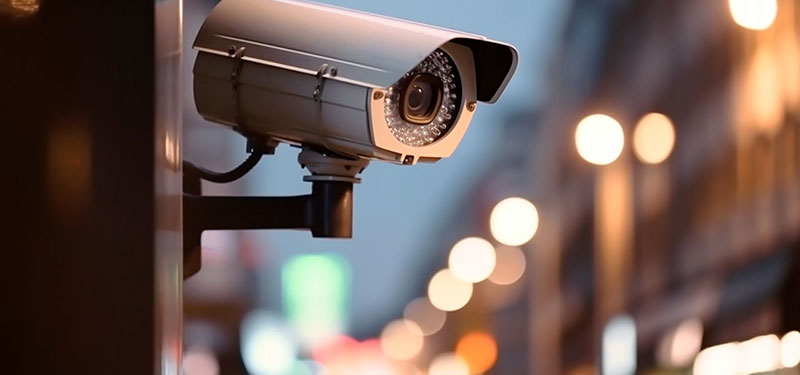A typical enforcement mechanism by which a board of trustees can address the conduct of a unit owner who has violated the condominium’s governing documents is to send a cease and desist letter. Typically, the letter will set forth, among other things, the offending conduct that precipitated the need for the letter, the provisions of the governing documents that have been breached as a result, and give notice to the unit owner to immediately cease and desist from continuing such behavior. When appropriate, the imposition of fines may be warranted, and said letters may also provide that due to the violations, the board will assess fines against the unit owner. Recently, the Appeals Court, in Trustees of 10 Porter St. Condo. Trust v. Cerda, (2023) (Rule 23.0), had opportunity to assess notices that were sent to unit owners who affixed cameras to certain parts of their units, and found “that fines are not ‘reasonable’ if imposed without notice of the basis.” The decision serves as a reminder that notices and/or cease and desist letters sent to unit owners should clearly articulate the basis for the notice especially in circumstances where the notice is prescribing fines.
Boards should carefully consider the amount of any fine they wish to impose, and in sending cease and desist letters, said letters should clearly set forth the basis of any such fine.
In the case, the Appeals Court was tasked with reviewing the lower court’s determination that cameras affixed to defendant unit owners’ window frames did not violate the condominium’s governing documents. While the Appeals Court ultimately affirmed same, the primary focus of the Court’s discussion (in regard to the window frame cameras) was dedicated to the notices that were sent to the defendant unit owners. Specifically, the notices that had been sent “to the defendants stated only that the cameras violated the condominium documents.” It appears that the notices only blanketly stated the cameras were in violation of the governing documents without setting forth the particular basis in the documents giving rise to such violation.
Despite the inexplicit notices, during the hearing before the Court, the plaintiff trustees argued they had broad authority to fine, as the cameras were a nuisance that interfered with the peaceful possession of other unit owners, in violation of the Master Deed. In response, the Court “declined to find that the cameras were a nuisance, noting that ‘self-installed security cameras on private property have become fairly commonplace in this day and age.’” Ultimately, the Court concluded that it would be unfair for the plaintiff trustees to recover fines under the notices sent “on grounds for which the plaintiffs had not been given notice.” The Court held that fines are unreasonable “if imposed without notice of the basis.”
Following the Court’s discussion of the cameras affixed to window frames, the Court then reviewed the lower court’s ruling, which adjudged that a camera affixed to the railing of the porch of a unit was, in fact, in violation of the condominium’s governing documents. Pursuant to Rule 2 of the condominium’s declaration of trust, nothing was allowed to be stored in the common elements without prior approval from the board. The unit owner deemed that she was not subject to Rule 2 because she had exclusive use of the porch rendering it “a ‘limited common area’ as defined in G. L. c. 183A, § 1.’” Despite the unit owner’s position, a provision of the Master Deed set forth that the common elements included the balconies of the condominium and that each unit owner had a license to exclusively use the balcony. In reliance on that provision, the Court concluded that the “porch camera was within the boundaries of the common elements and not within her unit.” Furthermore, “[t]he judge noted that the condominium statute would define a unit to encompass an appurtenant balcony ‘if ... stipulated in the master deed as being owned by the unit owner,’ G. L. c. 183A, § 1 ‘Unit,’ but here the master deed did not grant [the unit owner] ownership of the balcony, only a ‘license’ to use it exclusively.’” Based on the foregoing, the Appeals Court affirmed that the railing porch camera was in violation of the governing documents.
In connection with the finding that the railing porch camera was in violation of the condominium documents, the Appeals Court assessed the reasonableness of the fine imposed by the plaintiffs. The lower court, without providing much of an explanation for same, found “that the fifty dollar per day fine that the plaintiffs imposed on [the unit owner] for her porch camera was not ‘reasonable’ as required by G. L. c. 183A, § 10 (b) (5).’” The trustees proffered on appeal “that the judge abused his discretion in making that determination, because the word ‘reasonable’ in § 10(b)(5) refers only to whether the imposition of a fine was reasonable, not to whether the amount of the fine was reasonable.’” The Court concluded that the term reasonable, as same is defined by G.L. c. 183A, § 10(b)(5), refers “to both the imposition of the fine and its amount” and that ten dollars per day would be reasonable in these circumstances. Notably, the decision does not entirely detail why ten dollars would be reasonable, here, and does not explain how the Court reconciled that fifty dollars would be too excessive only providing that the judge “considered, among other factors, the plaintiffs’ conduct and what amount would serve as a ‘significant deterrent’ to unit owners to refrain from violating the condominium rules.’”1
There are many good takeaways from this case. Boards should carefully consider the amount of any fine they wish to impose, and in sending cease and desist letters, said letters should clearly set forth the basis of any such fine. As was seen in Trustees of 10 Porter St. Condo. Trust, the Appeals Court found that charging fifty dollars ($50) per day for a camera violation was not reasonable. Furthermore, this case demonstrates how it is possible for a Court to analyze a condominium’s governing documents in a way which would permit and forbid cameras dependent upon location. Additionally, and strikingly, the Court also refused to find that private cameras were a nuisance. Though the Court’s explanation on this point was limited, the Court did mention that it did not credit the plaintiffs’ testimony that cameras made people feel uncomfortable. While there is no way to know if the Court would have made a different finding if plaintiffs’ testimony was more credible, it is important to acknowledge that the Court refused to find that a camera, under the circumstances of the case, constituted a nuisance. It is important to reiterate that while this case made several findings on an array of matters, the decision is not binding, but is considered to be citable for persuasive value only.
Should any board wish to discuss the implications of this case in the context of their own communities and/or if a board is presently dealing with transgressing unit owners and camera installations, MBM is prepared and happy to assist.
1Additionally, another contributing factor which may have led to the reduction is the fact that the Court “noted ‘open hostility’ by the plaintiff trustees toward the defendants.’” In its discussion of the cameras affixed to window frames, the Court noted that the trustees had imposed fines without ensuring there was support in the condominium documents but rather was emotionally charged by the harassment they experienced.


